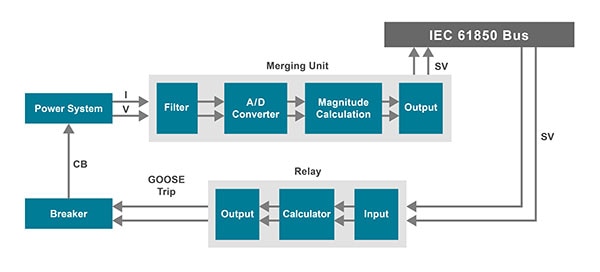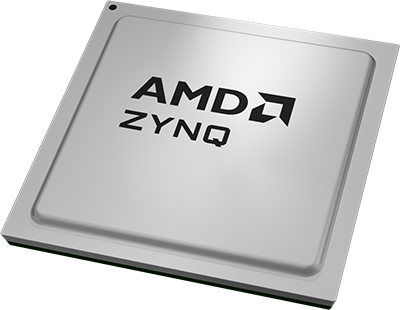A look at smart electric grids and how FPGAs and SoCs are used in their design.
sponsored by

Integrating Renewable Energy into the Grid
Electricity is delivered to industrial and residential areas via electrical grids. The standard national grid model enables fossil fuel or nuclear power stations to deliver power to homes, commercial premises, factories, and other environments. However, the increasing amount of renewable energy capacity installations, such as wind farms and privately owned units, has challenged the efficiency of power grids. In order to balance the intermittent renewable energy supply with demand, power networks are now incorporating energy storage systems into the grid.
A smart grid is an electricity network that uses advanced technologies to monitor and manage electricity transport to satisfy the dynamic requirements of the end users. This article discusses implementing smart grids using Field Programmable Gate Arrays (FPGAs) and Adaptive Systems on a Chip (SoC).
What is a Smart Grid?
A smart grid is an intelligent electricity grid that takes advantage of modern automation and Information and Communication Technology (ICT) to monitor the flow of power from points of generation to points of consumption. This intelligent grid is capable of controlling power flow as well as reducing loads to match generation in real-time. A smart grid differs from a conventional grid in one important aspect: the direction of electricity flow. In traditional power grids, the electricity flow is uni-directional; end users receive the power from the central power plants. In contrast, electricity flow in the smart grid is bi-directional. Power can flow in both directions between the central grid and distributed energy sources, such as wind turbines and photovoltaic panels.
Smart grid solutions can be instrumental in reducing transmission and distribution losses, in addition to offering peak load management, better asset management, renewable integration, better accessibility to electricity, and the possibility of self-healing grids. The energy management capabilities of smart grid technology benefits consumers and producers alike. Consumers can actively participate in the traditional energy grid, as well as effectively track their power consumption. Accessible tracking also allows producers to incorporate renewable resources, an addition that is too complex for the traditional grid. Smart grids represent a significant transformation of the conventional power grid, enabling a more sustainable and reliable energy future. Despite its advantages, the overhead costs of smart grid technology can be prohibitive, and deployment can be complex and time-consuming. Additionally, installing a smart grid requires providing real-time grid information, which may also increase the risk of security and data privacy breaches.
Characteristics of Smart Grids
The following features characterize a smart grid:
Transparency: The smart grid can collect data and make informed decisions concerning energy use. Sensors embedded in the grid can monitor energy use in real time, enabling grid operators to optimize power generation and distribution.
Dynamic Nature: An efficient and sustainable energy supply is only possible when grids dynamically integrate the actions executed by all connected users (energy providers and consumers). Smart grids balance the supply and demand of power by adjusting power generation and distribution. The grid can thus respond to changing energy prices, varying weather patterns, and other factors that influence energy supply and demand.
Intelligent electric devices (IEDs) in Smart Grid
Electric utility companies have been deploying Intelligent Electronic Devices (IEDs) in order to implement advanced automation systems as part of smart grid initiatives. An IED is a device incorporating one or more processors that can send or receive data and control signals from or to an external source. IEDs have enhanced microprocessor and communication technology, providing self and external circuit monitoring, and real-time synchronization for event reporting. An IED integrates a relay panel with a variety of single-function electromechanical relays and control switches into a single box. In addition, IEDs can handle additional features such as local and substation data access, and programmable logic controller (PLC) functionality, as well as having an entire range of software tools available for commissioning, testing, event reporting, and fault analysis. Figure 1 depicts the block diagram of an IED connected at various grid points to provide the data for intelligence and evaluations of the real-time state of the grid.

Figure 1: Block diagram of an IED
Renewable Power Integration in Smart Grids
Renewable energy and distributed generation have gained momentum in recent years, with the amount of electricity production from replenishable sources on a steady rise. Including renewable energy in the grid requires system coordination, as it involves challenges beyond the existing transients and voltage imbalances.
A smart grid is capable of balancing the supply and demand of grid energy. The grid uses real-time data harvested from sensors and applies predictive analytics based on weather forecasts to control the power output from renewable sources. If a smart grid receives data indicating a decrease in solar power due to cloud cover, the grid can automatically adjust the output from other renewable sources, such as wind turbines or energy storage systems, to compensate for the drop in solar power. In addition to controlling the output from renewable sources, smart grids take advantage of energy storage devices to store excess electricity generated during high renewable energy output periods and releasing it during periods of low output.
How do you make a Smart Grid smart?
A smart grid can be vulnerable to hacking and other network-based attacks. A typical hostile action consists of falsifying electricity consumption data that is transmitted between the power distribution server and smart meters. Smart grids must be designed with security in mind, as well as performance, scalability, and re-programmability. Smart grids must also have the ability to adapt and evolve as the energy industry changes.
Artificial Intelligence (AI) can also be integrated to provide intelligent decision-making capabilities and optimize power production. AI can accurately predict energy demand and generation by analyzing data from various sources, including weather forecasts, historical energy usage, and real-time energy data from smart energy meters. By making use of machine learning (ML) algorithms to identify patterns and trends in energy consumption, power grid operators are able to better optimize power generation and reduce energy waste.
Digital Twin technology can also be used for management of the grid. Digital Twins are virtual – and often real-time – representations of physical assets. Digital Twins in the power system can perform online grid analysis in real-time, integrating all the past and present data. This makes it possible to make predictions on future grid status. Digital Twins give the valuable insight that enables utility companies to improve planning, specifications, operational efficiency, and personnel training. They also offer a way to stress-test important assets and systems in preparation for various scenarios, including severe weather. Digital Twins can also be used to simulate carbon emissions.
FPGAs and SoCs
Shop our wide variety of FPGAs and Adaptive SoCs from AMD.
Don't forget to join our discussion.
AMD SoCs in Smart Grids
A smart grid becomes "intelligent" with a judicious blend of signal processing, communications management, dedicated hardware blocks, and power grid equipment. The use of AMD SoCs and FPGAs in high-performance controllers can be invaluable when running complex algorithms and parallel monitoring of large numbers of sensors. Much of the processing is taken over by on-chip digital signal processing (DSP), freeing up processor power for other tasks.

Figure 2: AMD Zynq 7000
SoC-e, (System on Chip Engineering S.L.), an Alliance Program partner of AMD, is a pioneer in developing a portfolio of IP cores and FPGA-based end equipment specifically designed for substation communication at high bitrates. SoC-e delivers a variety of solutions that cover the following areas:
- Connectivity for devices that are connected to the IEC 61850 Process Bus and/or Station Bus in energy substation automation, at Gigabit Ethernet speeds and beyond. SoC-e’s solutions for connectivity are based on high-availability and deterministic protocols like High-availability Seamless Ring protocol (HSR), Parallel Redundancy Protocol (PRP), and Time-Sensitive Networking (TSN), and can be supplied as:
- IP Cores
- Specialized development boards to reduce development and implementation time
- RedBox DAN and Switch end-equipment (RELY-PCIe, RELY-RB and RELY-TSN-SWITCH families), which are sold under RELYUM brand and allow third-party products to connect their equipment to the redundant network of the smart grid
- Sub-microsecond synchronization based on protocols like Precision Time Protocol (PTP) or IRIG-B. This solution can be provided separately or in combination with the connectivity solutions mentioned in the previous line.
- Authentication and encryption of the generic object-oriented substation event (GOOSE) and sample measured value (SMV) frames that are used by equipment, such as merging units or IEDs, for communication, based on IEC 62351-6 and IEC 62351-9 standards.
- High-performance processing systems based on IEC 61850-9-2 standard, connected to the process bus for implementing edge computing applications and centralized protections .
- Advanced remote monitoring and testing solutions based on IEC 61850-10 standard, for enhanced grid reliability, real-time data exchange, and streamlined communication between intelligent electronic devices (IEDs) in substations.
AMD products are used throughout the modern power grid to manage, control, and protect efficient power delivery. Examples of products that are well-suited to supporting the smart grid and substation/power automation and control systems include:

Figure 3: AMD Zynq UltraScale+
MPSoC
Summing up: the Future of the Power Grid
As energy infrastructure undergoes a transformation in the coming decade, smart grids will play a significant role. Adaptive SoCs are expected to accelerate this transformation by providing scalability, re-programmability, and security to the power grid. However, a smooth and efficient smart grid operation must address implementation challenges such as reliability, security, and deterministic behavior over long product cycles. AMD plays a pivotal role across the complex smart grid ecosystem. AMD products are found in many nodes of the modern power grid to manage, control, and protect uninterrupted and efficient power delivery to the user.
© 2023 Advanced Micro Devices, Inc. AMD, and the AMD Arrow logo, UltraScale+, Zynq and combinations thereof are trademarks of Advanced Micro Devices, Inc. Other product names used in this publication are for identification purposes only and may be trademarks of their respective owners.
What types of advancements and features will come to smart grids in the next decade?
Please tell us in the Comments section below.
